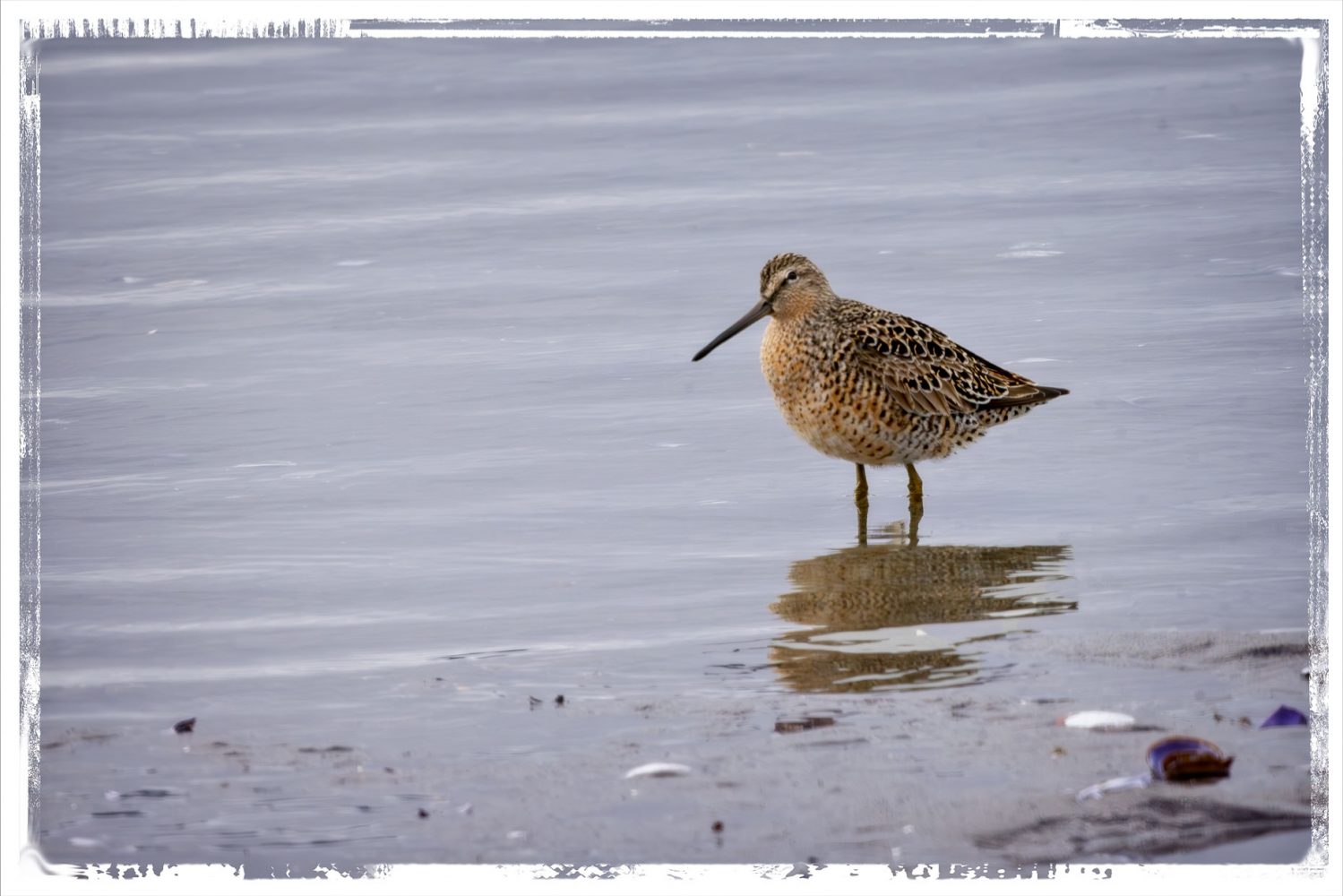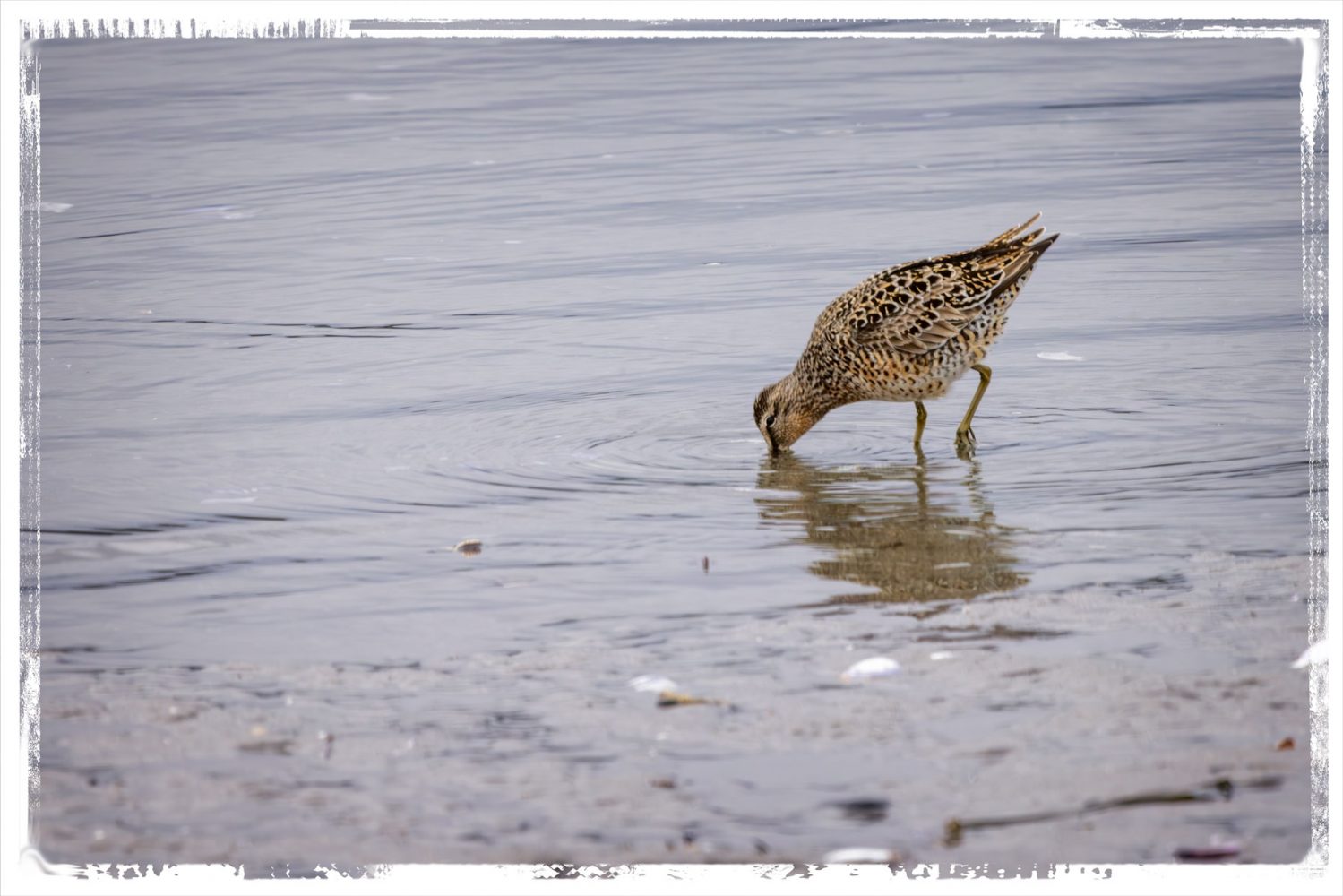When it comes to camouflage, the Dunlin’s breeding plumage is nearly as good as the Black-Bellied Plover. Though it’s not nearly as distinctive, its black belly and spangled back, made it hard enough to see that my auto-focus ended up focusing on the barnacled rocks rather than on the Dunlin.

Luckily, its habit of wading out into the water to feed makes it easier to get a good photo.

Although the Short-Billed Dowitcher has the same spangled back as the Black-Bellied Plover and the Dunlin, its rusty breast and long beak clearly set it apart from those two.

Although they’re called Short-billed Dowitcher, their bill is much longer than most shorebirds, and watching them feed made me wonder what the heck they were eating.

According to the Cornell Lab All About Birds: “Short-billed Dowitchers restlessly probe muddy substrates with the bill held vertically, in search of buried invertebrate, especially marine worms, mollusks (small clams), crustaceans (fiddler crab, shrimp), and isopods and amphipods of various kinds. … When they detect prey beneath the mud, dowitchers consume it immediately with the exception of larger worms, which they pull from the burrow and consume above the water.”
